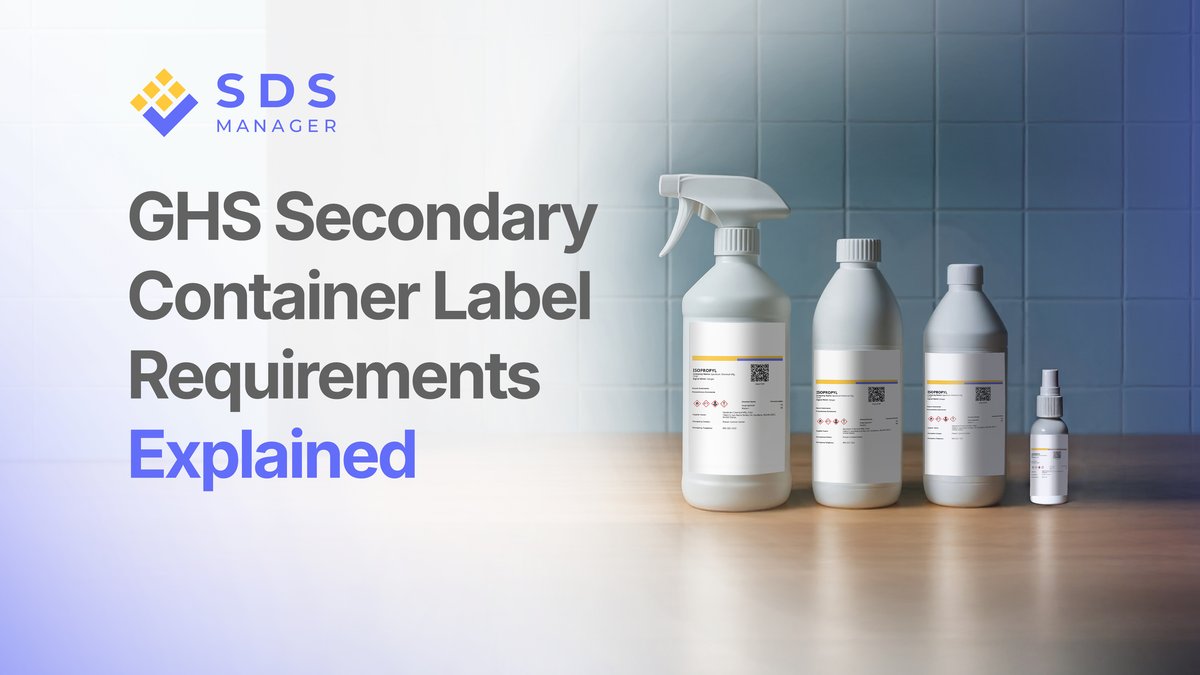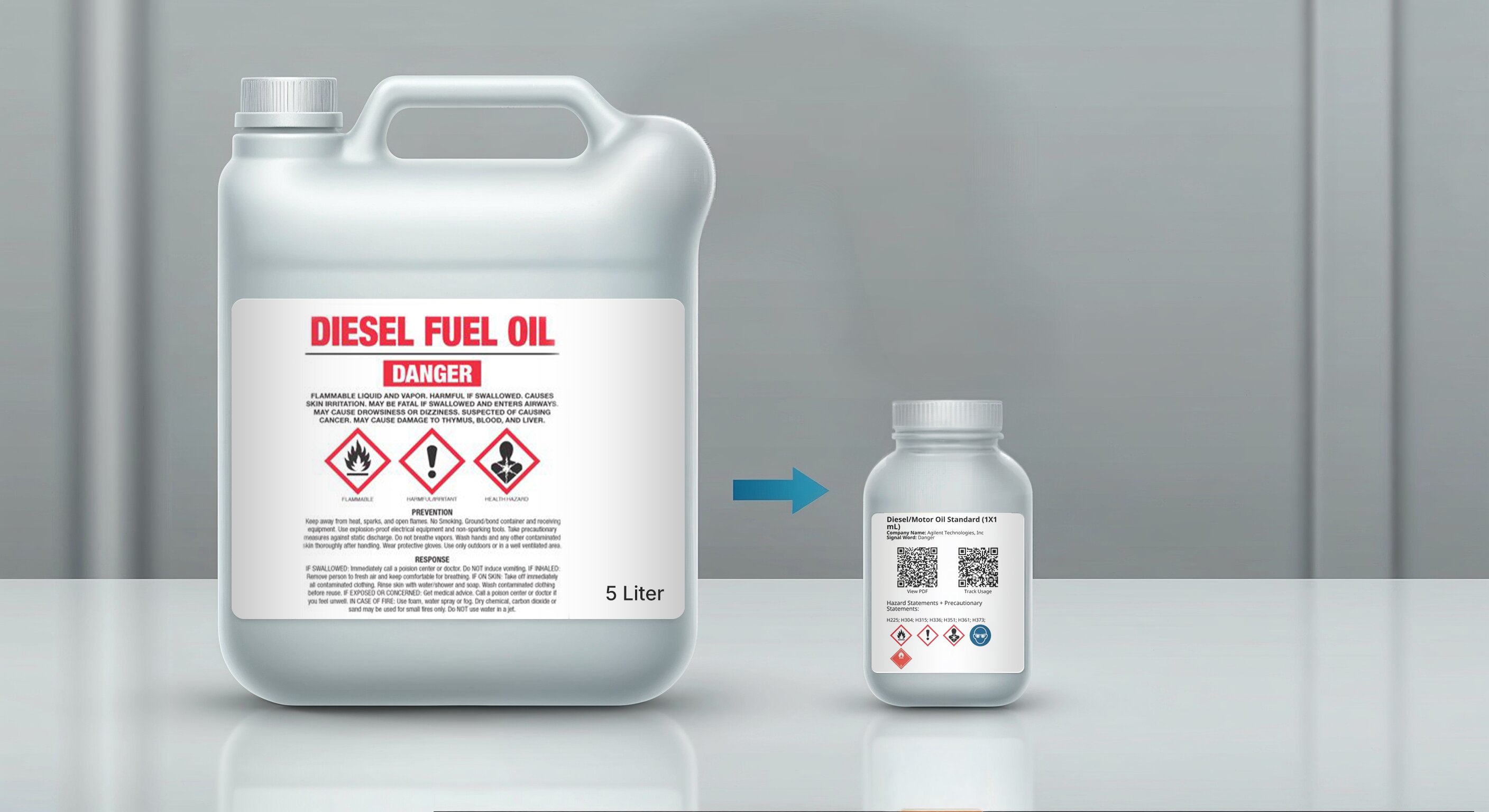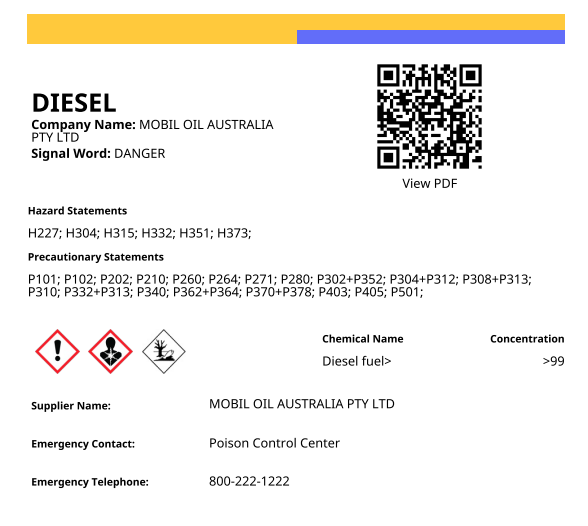

While most companies are familiar with labeling primary chemical containers, secondary container labeling is often misunderstood or overlooked.Yet under WHMIS 2015 Canada’s implementation, GHS-compliant labels are mandatory for secondary containers too.
In this article, we break down everything you need to know about secondary container labels, including what they are, when they’re required, and how to make sure they meet GHS (Globally Harmonized System) standards.
What Is a Secondary Container?
A secondary container is any vessel used to store or dispense a hazardous chemical after it has been transferred from its original (primary) manufacturer container. These include spray bottles, measuring cups, small jugs, test tubes or vials, storage jars or buckets.
Even if a chemical is only being used temporarily in a secondary container, proper labeling is required if the container leaves the user’s control, even briefly.

When Is GHS Labeling Required on Secondary Containers?
Under WHMIS 2015, every workplace container of a hazardous product must be labeled unless:
- The product is used immediately and exclusively by the person who transferred it.
- It remains under their direct control and supervision the entire time.
If the container is left unattended, shared, moved to another location, or stored for future use, it must have a compliant workplace label.
Failing to label secondary containers can result in non-compliance with Canada’s Hazardous Products Regulations (HPR) and pose significant safety risks.
What Must Be on a GHS-Compliant Secondary Label?
A secondary container label doesn’t need to be as extensive as a primary container label, but it must still include the core GHS elements relevant to that specific chemical. At minimum, the label should contain:
- Product Identifier- The name must exactly match the one on the Safety Data Sheet (SDS).
- GHS Pictograms- Only include the pictograms that apply to the chemical’s classified hazards.
- Signal Word- Either “Danger” or “Warning”, depending on the severity of hazards.
- Hazard Statements- These describe the nature of the hazard (e.g., “Causes skin irritation”).
- Precautionary Statements (Recommended)- Include safety guidance like “Wear protective gloves” or “Keep away from heat.”
All this information can be found in Sections 2 and 3 of the product’s SDS, which must be available in English and French in Canada.
Below is an example of a GHS Secondary Label generated by SDS Manager's free secondary label generator:

The Easy Way: Use an Automated Label Generator
Designing and printing secondary labels manually can be time-consuming. SDS Manager offers a free GHS Secondary Label Generator that:
- Auto-fills hazard info from your SDS
- Supports all standard label sizes
- Includes QR codes linking directly to the SDS
- No design or regulatory expertise needed
Just enter the chemical name, verify the details, and print, it’s that easy.
Labeling Small Containers
Labeling small or oddly shaped containers can be tricky. Here’s how to stay compliant:
- Use abbreviated labels: As long as they contain the required elements.
- Print labels in high contrast: To ensure readability.
- Attach tags if needed: For containers too small for full labels.
- Use durable, smudge-resistant materials: Especially in wet or high-use environments.
Final Thoughts: Don’t Skip Secondary Labeling
It’s easy to think of secondary labeling as an afterthought but that’s a mistake. Improperly labeled containers are a leading cause of workplace chemical incidents. By ensuring every container, even a small spray bottle, is labeled correctly, you're not only complying with GHS and WHMIS standards, you're actively protecting your team’s health and safety.
Frequently Asked Questions
Do I need to label a spray bottle if I’m using it right away?
If you’re the only person using the container and will empty it immediately, you may be exempt. Otherwise, yes, label it.
Can I use handwritten labels?
Yes, as long as they are legible and include all required elements.
Are pictograms required on every secondary container?
Yes, if the chemical’s classification warrants one. Check the SDS to confirm.
What happens if I forget to label a secondary container?
This is a violation of regulatory standards and can result in penalties and increased risk of exposure.